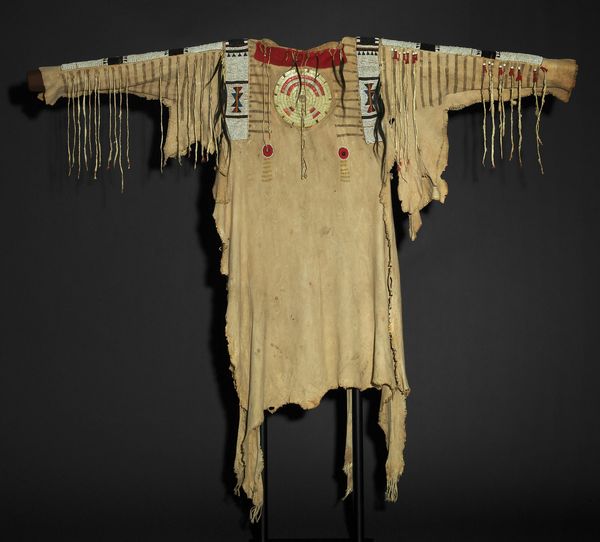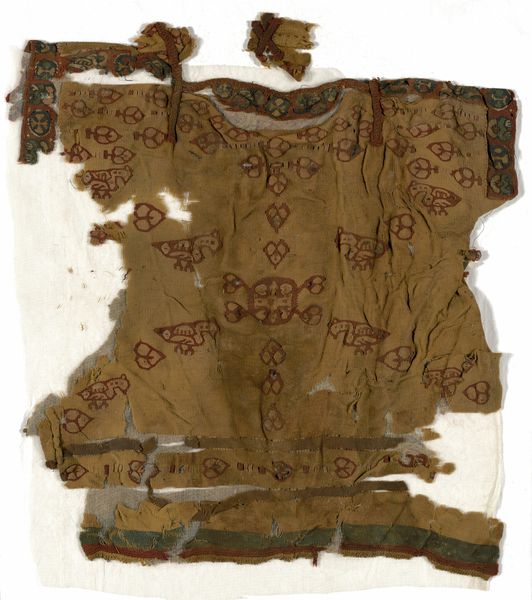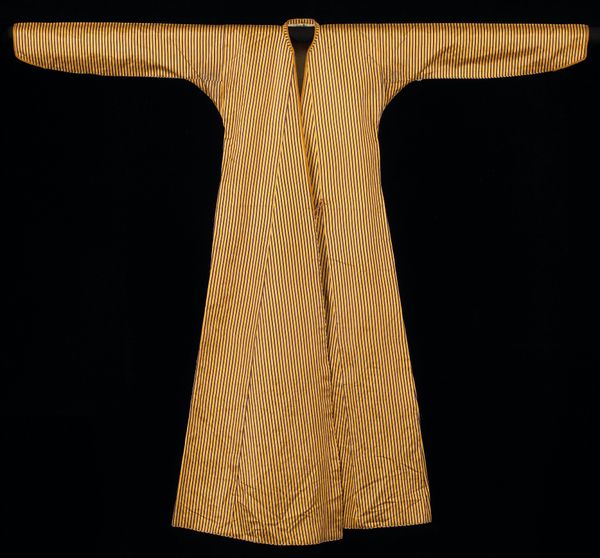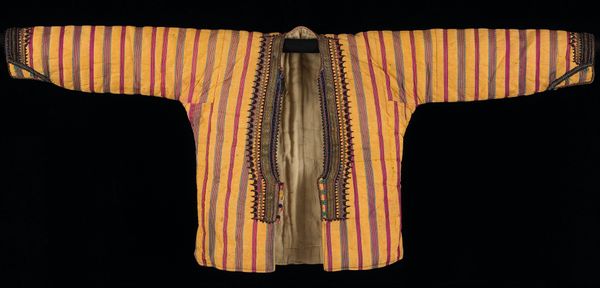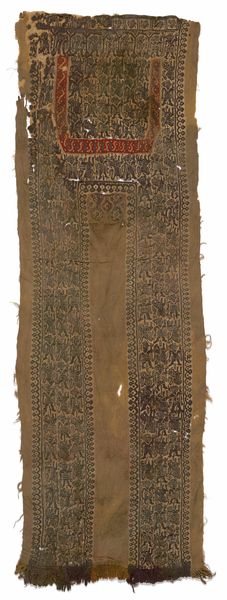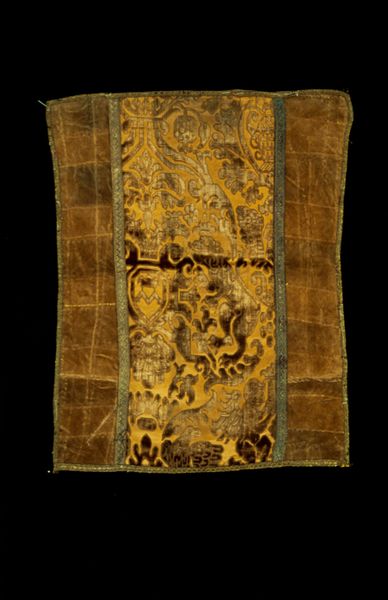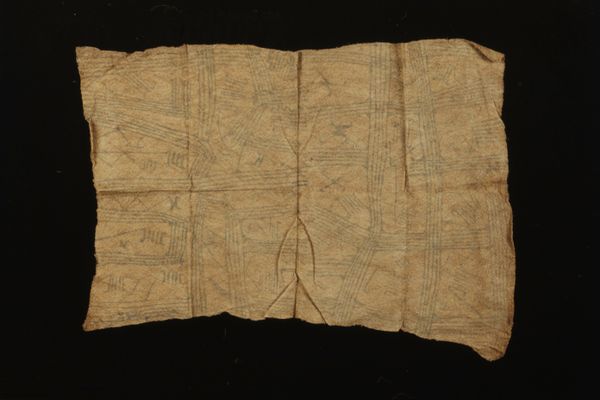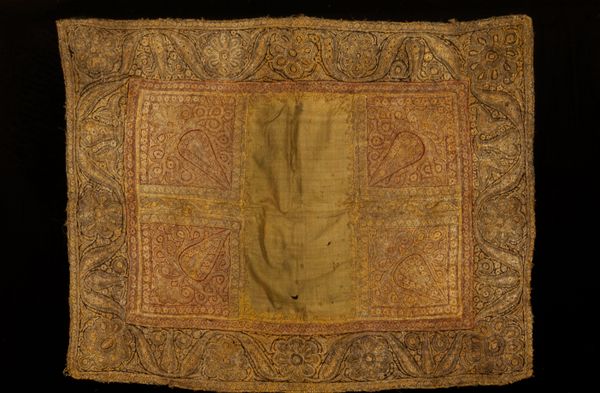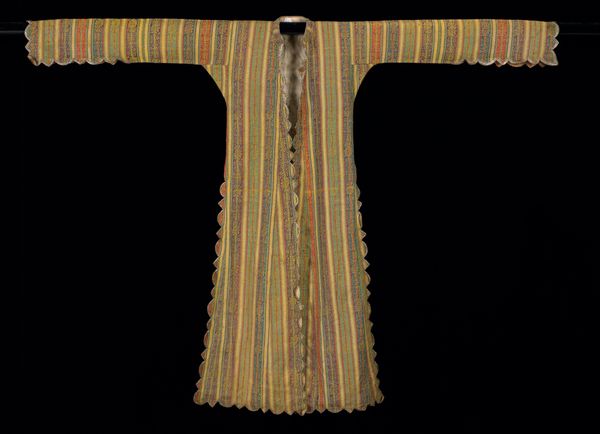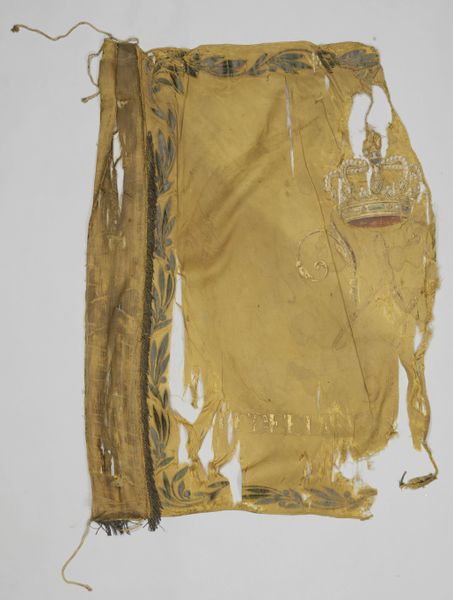
#
natural stone pattern
#
dark clothe
#
worn
#
sculpture
#
hand-embroidered
#
derelict
#
carved into stone
#
building art
#
united-states
#
beaded
#
layered pattern
Dimensions: 39 1/4 x 63 1/2 in. (99.7 x 161.29 cm) (including fringes, excluding pendants)
Copyright: Public Domain
This shirt, made by the Woodlands people, features bold geometric designs painted onto its surface. These are not mere decorations. They speak to a deeper visual language, one rooted in the cultural memory of the Woodlands people. The patterns draw the eye, echoing similar motifs found across different cultures. Notice how the repeated linear forms appear, mirrored in ancient pottery and textiles worldwide. The zig-zag lines on the sleeves are reminiscent of those found on a Greek key pattern, a symbol that also appears on shields and pottery throughout the ancient Mediterranean. These shapes remind us of the universal human impulse to create order and meaning from chaos, an urge that manifests itself in recurring symbolic forms. The repetition of these geometric elements is a potent reminder of the past, charged with a powerful force, engaging viewers on a deep, subconscious level. These geometric symbols are like echoes, resonating through time, constantly reshaped by new contexts.
Comments
minneapolisinstituteofart about 2 years ago
⋮
This one-of-a-kind shirt was created in the 18th century by Native Americans living in the Great Lakes or Woodlands region. Early French explorers interacted and traded with Native American tribes in the area referred to as New France, a French colony that existed from 1534-1763. This area initially extended from the state of New York to Minnesota, and from Canada to Louisiana. News of interesting "primitive" Native American people was sent to French royalty who demanded items created by these people be brought back home. This garment would have been worn by a Native American man of high status, and was created and painted by a woman. The animal hide is probably antelope, traded from the tribes to the west because it is stronger and thinner than deer hide. The shirt has elements from Woodlands, Great Lakes, and Plains regions, and the complex designs may have been inspired by tattooing. Shown headless and with pointed body and wings, the interlocking abstracted painted designs on the body probably represents the sacred Thunderbird, an important being in traditional Native American spirituality. The extreme degree of stylization clearly demonstrates that artistic abstraction was practiced by Native artists at the time. With less than 35 surviving objects from the early 1700s decorated with abstract painting of these regions, this is the only known surviving example of a painted shirt.
Join the conversation
Join millions of artists and users on Artera today and experience the ultimate creative platform.
